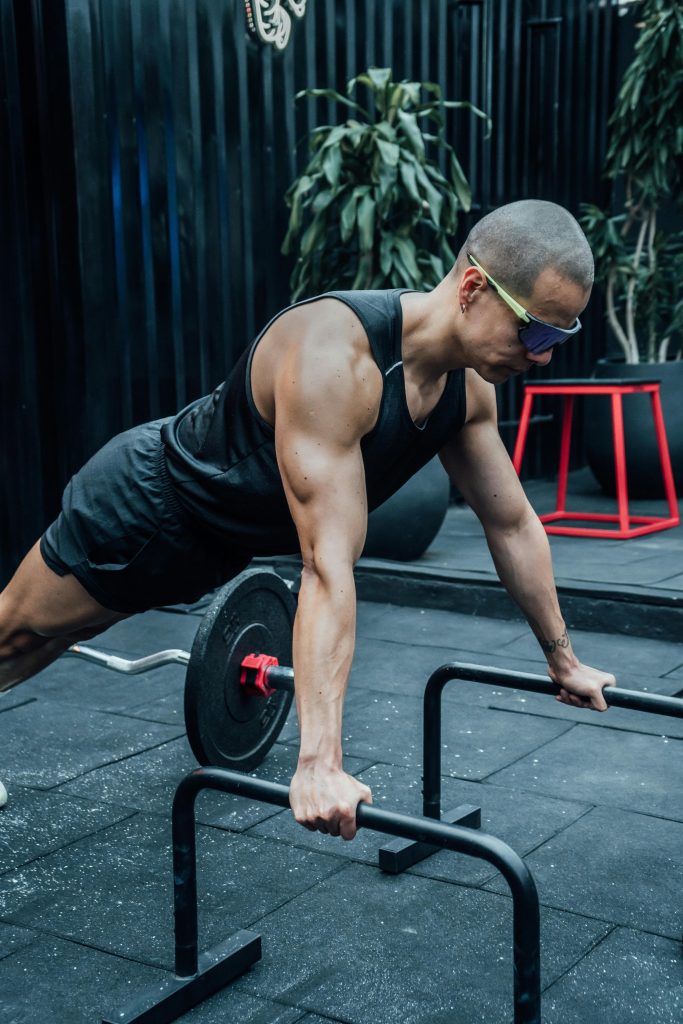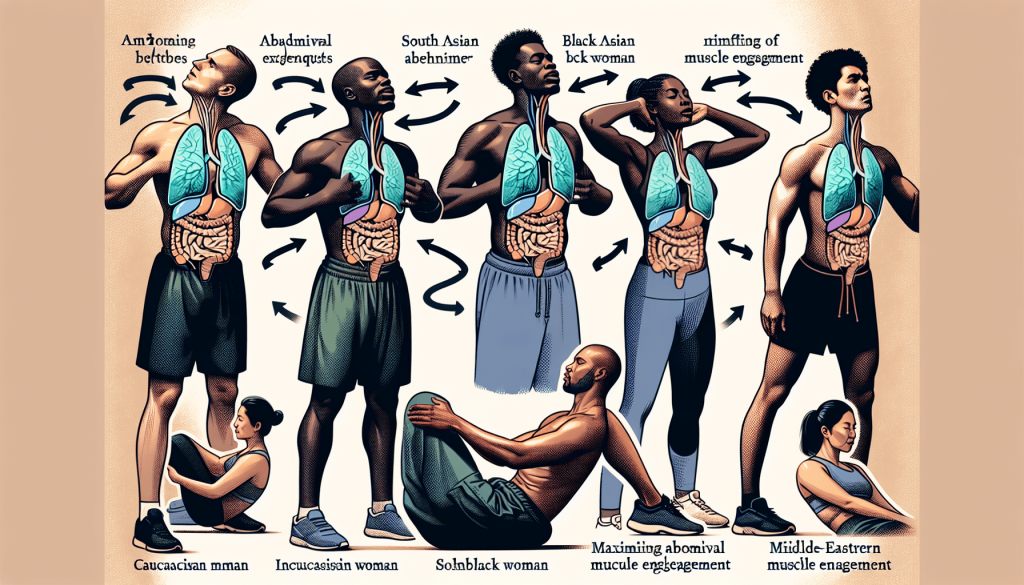Are you curious about breathing techniques to enhance abdominal muscle activation? If you’ve ever wondered how to build six pack abs and strengthen your core, you’ve likely pondered if there are specific breathing techniques that can help. Well, you’re in luck! In this article, we will explore the topic of abdominal muscle activation and delve into whether there are any specialized breathing techniques that can assist in achieving your fitness goals. Let’s dive in!

The Importance of Breathing for Abdominal Muscle Activation
Your abdominal muscles play a crucial role in maintaining core stability and proper body alignment. Whether you are an athlete, a fitness enthusiast, or simply looking to improve your posture and overall strength, activating your abdominal muscles is essential. While many factors contribute to abdominal muscle activation, one often overlooked aspect is proper breathing techniques. By focusing on your breath and utilizing specific techniques, you can optimize the engagement of your abdominal muscles and enhance your overall performance in various exercises and everyday activities.
Diaphragmatic Breathing
One of the key breathing techniques for abdominal muscle activation is diaphragmatic breathing. Often referred to as “belly breathing,” this technique involves utilizing the diaphragm, a large muscle located between your chest and abdomen, to initiate your breath. Unlike shallow chest breathing, which engages the accessory muscles and leads to tension in the upper body, diaphragmatic breathing allows for a deep, full breath that activates the abdominal muscles.
To practice diaphragmatic breathing, find a comfortable sitting or lying position. Place one hand on your chest and the other on your abdomen. As you inhale deeply through your nose, allow your abdomen to expand while keeping your chest relatively still. As you exhale through your mouth, gently contract your abdominal muscles, allowing your belly to naturally deflate. Repeat this process for several breaths, focusing on the sensation of your abdomen rising and falling with each breath. By incorporating diaphragmatic breathing into your daily routine, you can strengthen your abdominal muscles and enhance their activation during exercise.
Engaging the Transverse Abdominis Muscle
Another important muscle to activate for a strong core is the transverse abdominis. Located deep within your abdominal wall, this muscle acts as a natural corset, providing stability to your spine and pelvis. Engaging the transverse abdominis not only contributes to better posture and alignment but also enhances the effectiveness of other abdominal exercises.
To activate the transverse abdominis, begin by finding a neutral spine position. Stand tall or lie on your back with your knees bent. Take a deep breath in, allowing your abdomen to relax. As you exhale, gently draw your belly button in towards your spine, engaging the deep abdominal muscles. Imagine bringing your navel closer to your spine without holding your breath or tensing your other muscles. Hold this engagement for a few seconds, continuing to breathe naturally. Release and repeat the exercise, gradually increasing the duration of the engagement. By incorporating this technique into your abdominal exercises, you can maximize the activation of your transverse abdominis and strengthen your core.
Breathing Techniques to Activate Abdominal Muscles during Exercise
Exhale on Exertion
When performing exercises that involve exertion, such as lifting weights or doing crunches, exhaling on the exertion phase can enhance abdominal muscle activation. Exhaling during the exertion phase helps engage the deep core muscles, including the transverse abdominis, and supports the overall stability of the spine.
For example, when performing a bicep curl, exhale as you lift the weights towards your shoulders. As you exhale, focus on contracting your abdominal muscles, enhancing the engagement of your core. This technique not only strengthens your abdominal muscles but also increases the effectiveness of the exercise and reduces the risk of injury.
Inhale during the Resting Phase
While exhaling on exertion is important, it is equally essential to inhale during the resting phase of an exercise. Inhaling allows for a brief pause in muscle activation and provides an opportunity for your body to replenish oxygen and relax before the next exertion.
Continuing with the bicep curl example, inhale as you slowly lower the weights back to the starting position. As you inhale, focus on expanding your abdomen and chest, allowing for a full breath. This momentary pause in muscle activation and conscious inhalation help maintain a steady flow of oxygen to your muscles and prevent unnecessary tension or fatigue.
Controlled Breathing
In addition to timing your breath with specific exercise phases, practicing controlled breathing throughout your workout can further enhance abdominal muscle activation. Controlled breathing involves maintaining a steady rhythm and focus on your breath, allowing for a heightened mind-muscle connection.
During your exercises, strive for a consistent and rhythmic breath pattern. For example, you can inhale for a count of two, hold your breath for a count of one, and exhale for a count of two. This controlled breathing technique promotes abdominal muscle engagement, as it encourages you to stay present and connected to your core throughout the exercise. By incorporating this technique into your routine, you can improve the activation and strength of your abdominal muscles.
Yoga Breathing Techniques for Abdominal Muscle Activation
Kapalabhati Pranayama
Kapalabhati pranayama, also known as the Skull Shining Breath, is a yoga breathing technique that can activate and strengthen the abdominal muscles. This rapid and forceful breath stimulates the diaphragm and engages the transverse abdominis, providing a thorough workout for your core.
To practice Kapalabhati pranayama, sit comfortably with an upright posture. Place your hands on your belly. Take a deep inhalation, expanding your abdomen fully. As you exhale, forcefully contract your abdominal muscles, pushing the air out rapidly through your nose. The inhalation should be passive, allowing your abdomen to naturally expand. Repeat this process for several rounds, starting with a slower pace and gradually increasing the speed and intensity. Remember to always listen to your body and start with a pace that feels comfortable for you.
Bhastrika Pranayama
Bhastrika pranayama, or the Bellows Breath, is another yoga breathing technique that can activate your abdominal muscles while improving lung capacity and circulation. This energizing breath involves forceful inhalations and exhalations, stimulating the core muscles, and promoting increased oxygen intake.
To practice Bhastrika pranayama, sit in a comfortable position and relax your shoulders. Take a deep inhalation, expanding your belly and chest. Exhale forcefully, contracting your abdominal muscles to expel the air rapidly through your nose. Follow this with a quick and forceful inhalation, expanding your abdomen and chest fully. Continue this cycle of forceful inhalations and exhalations, maintaining a steady and controlled pace. Start with a slower pace and gradually increase the speed and intensity, focusing on engaging your abdominal muscles with each breath.
Uddiyana Bandha
Uddiyana Bandha, or the Upward Abdominal Lock, is a powerful yoga technique that activates the abdominal muscles and stimulates the diaphragm. This technique involves a voluntary breath hold with the abdominal muscles drawn inward and upward.
To practice Uddiyana Bandha, stand with your feet hip-width apart and slightly bend your knees. Place your hands on your thighs, just above your knees. Take a deep breath in and exhale completely. Then, relax your diaphragm and draw your abdominal muscles in and up, lifting the lower abdomen towards the ribcage. Hold this engagement for a few seconds, continuing to breathe with your chest. Release the contraction and inhale deeply, returning to a relaxed position. Repeat this exercise several times, gradually increasing the duration of the engagement.
By incorporating these yoga breathing techniques into your practice, you can enhance the activation and strength of your abdominal muscles, supporting your overall core stability and fitness journey.
Breathing Techniques for Abdominal Muscle Activation in Pilates
Deep Scoop Breath
One of the fundamental breathing techniques in Pilates is the Deep Scoop Breath. This technique helps activate the deep abdominal muscles, including the transverse abdominis, which is integral to core stability and control.
To practice the Deep Scoop Breath, start by lying on your back with your knees bent and feet flat on the ground. Place your hands on your lower abdomen. As you inhale, focus on breathing deeply and expansively, filling your abdomen, ribcage, and chest with air. On the exhale, engage your deep abdominal muscles, allowing your belly to scoop inward towards your spine. Simultaneously, imagine hollowing out your lower abdomen and pressing it towards the mat. Repeat this breath pattern for several cycles, connecting your breath with the engagement of your abdominal muscles.
Hundred Breathing
The Hundred is a classic Pilates exercise that targets the abdominal muscles while simultaneously incorporating controlled breathing techniques. The specific breathing pattern used during the Hundred exercise helps activate and strengthen the deep core muscles, increasing the challenge and effectiveness of the movement.
To perform the Hundred exercise, lie on your back with your knees lifted in a tabletop position, legs extended straight above your hips. Lift your head, neck, and shoulders off the mat, reaching your arms long by your sides. As you inhale, pump your arms up and down vigorously, maintaining a steady rhythm. On each exhale, focus on engaging your deep abdominal muscles, pressing your lower back firmly into the mat. Breathe in for five arm pumps, and breathe out for five arm pumps, continuing this pattern for a total of 100 arm pumps. This controlled breathing technique enhances the activation of your abdominal muscles and enables you to maintain stability and control throughout the exercise.
By incorporating these breathing techniques into your Pilates practice, you can improve your core strength and activation, leading to greater overall alignment and body control.

Breathing Techniques in Weightlifting for Abdominal Muscle Activation
Valsalva Maneuver
The Valsalva maneuver is a commonly used breathing technique in weightlifting, particularly during compound exercises such as squats and deadlifts. This technique involves taking a deep breath and holding it before exerting force. The Valsalva maneuver increases intra-abdominal pressure, providing stability to the core and helping to protect the spine.
To perform the Valsalva maneuver, take a deep breath in before starting the lifting movement. Hold your breath as you exert force, such as pushing or pulling a heavy weight. Release your breath once you have completed the exertion phase. It’s important to note that while the Valsalva maneuver helps activate the abdominal muscles and provides stability, it may also increase blood pressure. Therefore, it is essential to practice this technique with caution and consult with a healthcare professional if you have any underlying health conditions.
Bracing Breath
The bracing breath technique is another effective breathing technique for abdominal muscle activation in weightlifting. This technique involves taking a deep breath and exhaling forcefully, engaging the abdominal muscles to create a stable and supportive core.
Before initiating a lift, take a deep breath in through your nose, filling your abdomen and chest with air. As you exhale, forcefully contract your abdominal muscles, imagining you are pulling your navel towards your spine. This engagement creates a bracing effect, providing stability and support to your spine during the lift. Maintain this engagement throughout the entire exercise and release the contraction once you have completed the movement. The bracing breath technique enhances core activation, allowing you to lift heavier weights safely and effectively.
By incorporating these breathing techniques into your weightlifting routine, you can enhance the engagement and strength of your abdominal muscles, contributing to better overall performance and safety.
Breathing Techniques in Martial Arts for Abdominal Muscle Activation
Haragei Breathing
In martial arts, such as karate or tai chi, breath control is essential for optimal performance and technique. Haragei breathing, also known as abdominal breathing or center breathing, is a technique that aids in activating the abdominal muscles and connecting the mind and body.
To practice Haragei breathing, stand in a relaxed and upright position with your feet shoulder-width apart. Place your hands on your lower abdomen, just below your navel. Inhale deeply through your nose, allowing your abdomen to expand naturally. As you exhale through your mouth, draw your breath towards your center, feeling your abdominal muscles engage and tighten. Imagine drawing your energy inward, towards your lower abdomen, while maintaining a relaxed and focused state of mind. Continue this breathing pattern, coordinating your breath with your movement or martial arts techniques. Haragei breathing not only enhances abdominal muscle activation but also cultivates mindfulness and inner calm.
Kiai Breathing
Kiai breathing is a martial arts technique used to enhance power and focus during strikes or defensive moves. This explosive breathing technique engages the abdominal muscles, providing additional force and stability.
To practice Kiai breathing, assume a strong and grounded stance, with your feet shoulder-width apart. As you prepare to strike or execute a technique, inhale deeply and quickly through your nose. As you exhale forcefully through your mouth, produce a loud shout or vocalization. This exhalation should be sharp and powerful, originating from your lower abdomen and engaging your core muscles. This explosive breath not only adds power and intensity to your movements but also connects your breath with the activation of your abdominal muscles, enhancing overall performance in martial arts.
By incorporating these breathing techniques into your martial arts practice, you can improve your abdominal muscle activation, power, and focus, contributing to a more effective and fulfilling training experience.

Breathing Techniques for Abdominal Muscle Activation in Bodyweight Exercises
Breathing Squat
The breathing squat is a bodyweight exercise that combines the benefits of squats with deliberate and controlled breathing techniques. This exercise activates the abdominal muscles while improving lower body strength and mobility.
To perform the breathing squat, stand with your feet slightly wider than shoulder-width apart, toes slightly turned out. Take a deep breath in as you lower your body into a squat position, keeping your chest lifted and your knees tracking in line with your toes. As you exhale, push through your heels and engage your core to rise back to the starting position. Repeat this exercise, coordinating your breath with your movement. Focus on fully engaging your abdominal muscles and maintaining control throughout the entire squat.
Reverse Crunch Breathing
The reverse crunch is a bodyweight exercise that targets the lower abdominal muscles, enhancing their activation and strength. By incorporating specific breathing techniques, you can further optimize the engagement and effectiveness of this exercise.
To perform the reverse crunch, lie on your back with your legs extended, arms by your sides. Bend your knees and lift your legs, bringing your knees towards your chest. As you inhale deeply, imagine filling your lower abdomen with air, expanding it fully. On the exhale, contract your abdominal muscles, lifting your hips off the ground and bringing your knees towards your face. Repeat this movement, maintaining control and coordination of your breath with the engagement of your abdominal muscles. The reverse crunch combined with deliberate and controlled breathing techniques provides an efficient way to activate and strengthen your lower abdominal muscles.
By incorporating these breathing techniques into your bodyweight exercises, you can enhance the activation and strength of your abdominal muscles, contributing to better overall performance and results.
Breathing Techniques in Swimming for Abdominal Muscle Activation
Breath Control and Timing
In swimming, breath control and timing are crucial for efficient technique and performance. Proper breathing techniques not only contribute to optimal oxygen intake but also activate the abdominal muscles, providing stability and control in the water.
During swimming, it is important to exhale fully and continuously while your face is submerged in the water. This helps to release carbon dioxide and create space for a full inhalation when you turn your head to the side to take a breath. Timing your breath with the rhythm of your stroke, such as inhaling when your arm is recovering above the water, enhances abdominal muscle activation and overall body control. By incorporating proper breath control and timing into your swimming technique, you can maximize the engagement of your abdominal muscles and improve your efficiency and performance in the water.
Exhalation for Core Stability
Another important breathing technique in swimming is exhaling with a focus on core stability. When you exhale forcefully and engage your abdominal muscles during the underwater phase of your stroke, you create a more stable and streamlined body position, reducing drag and increasing efficiency.
As you swim, exhale forcefully through your nose or mouth underwater, utilizing the engagement of your abdominal muscles. This controlled exhalation not only activates your core muscles but also assists in maintaining proper body alignment and maximizing propulsion. By consciously exhaling and engaging your abdominal muscles during the underwater phase of your stroke, you can enhance your abdominal muscle activation and overall swimming performance.
By incorporating these breathing techniques into your swimming routine, you can improve your abdominal muscle activation, body control, and efficiency in the water.

Breathing Techniques in Running for Abdominal Muscle Activation
Diaphragmatic Breathing
Similar to other forms of exercise, diaphragmatic breathing is beneficial in running for abdominal muscle activation. Proper breath control and utilizing your diaphragm enable efficient oxygen intake and contribute to better running performance.
To practice diaphragmatic breathing while running, focus on expanding your belly and chest with each inhalation. Allow your diaphragm to engage, drawing in air deeply. Exhale naturally through your mouth, paying attention to the gentle contraction of your abdominal muscles. Coordinate your breath with your running rhythm, aiming for a relaxed and steady breathing pattern. By incorporating diaphragmatic breathing into your running routine, you can optimize the activation of your abdominal muscles and increase overall running efficiency.
Breathing Rhythm
Establishing a consistent breathing rhythm is important for abdominal muscle activation and endurance in running. By syncing your breath with your running cadence, you can maintain a steady pace, reduce tension, and effectively engage your abdominal muscles.
As a general guideline, aim for a 2:2 or 3:3 breathing pattern, inhaling for two or three steps, and exhaling for two or three steps. Find a rhythm that feels comfortable for you, aligning your breath with your stride. This controlled and synchronized breathing not only enhances abdominal muscle activation but also helps regulate your running pace and energy expenditure. By focusing on your breathing rhythm during running, you can optimize the engagement of your abdominal muscles and improve your overall performance and endurance.
By incorporating these breathing techniques into your running routine, you can enhance the activation and strength of your abdominal muscles, contributing to better posture, endurance, and overall running experience.
The Role of Breathing Techniques in Everyday Activities for Abdominal Muscle Activation
Breathing Awareness during Sitting and Walking
Breathing techniques for abdominal muscle activation are not limited to exercise and fitness routines. Mindful breathing during everyday activities, such as sitting or walking, can contribute to better posture, core stability, and abdominal muscle engagement.
Throughout the day, take moments to check in with your breath and bring awareness to your abdominal muscles. When sitting, focus on maintaining an upright posture and breathing deeply into your abdomen. Avoid shallow chest breathing and allow your belly to expand with each breath. Similarly, when walking, coordinate your breath with your steps, emphasizing the inhalation and exhalation through your abdomen. This conscious breathing practice promotes abdominal muscle activation and posture awareness, contributing to improved core strength and stability in your daily life.
Breath Support during Lifting
Whether you are lifting heavy objects during household chores or carrying groceries, utilizing proper breath support is crucial for abdominal muscle activation and spinal stability.
Before lifting, take a deep breath in, expanding your abdomen, ribcage, and chest. As you exhale, engage your abdominal muscles, imagining you are hugging your internal organs towards your spine. Maintain this engagement and a steady breath as you lift the object, using your legs and core muscles to support the load. By consciously incorporating breath support into your lifting activities, you can optimize the engagement of your abdominal muscles, protect your spine, and prevent unnecessary strain or injury.
By incorporating these breathing techniques into your daily activities, you can enhance the activation and strength of your abdominal muscles, supporting your overall posture, stability, and well-being.
In conclusion, the importance of breathing for abdominal muscle activation cannot be overstated. By utilizing specific breathing techniques, such as diaphragmatic breathing, exhaling on exertion, and controlled breathing, you can optimize the engagement and strength of your abdominal muscles in various exercises, sports, and everyday activities. Whether you are a yogi, a weightlifter, a martial artist, a runner, or simply looking to enhance your core stability, incorporating proper breathing techniques will contribute to better overall performance, posture, and well-being. So take a deep breath, activate your abdominal muscles, and elevate your fitness journey to new heights.






